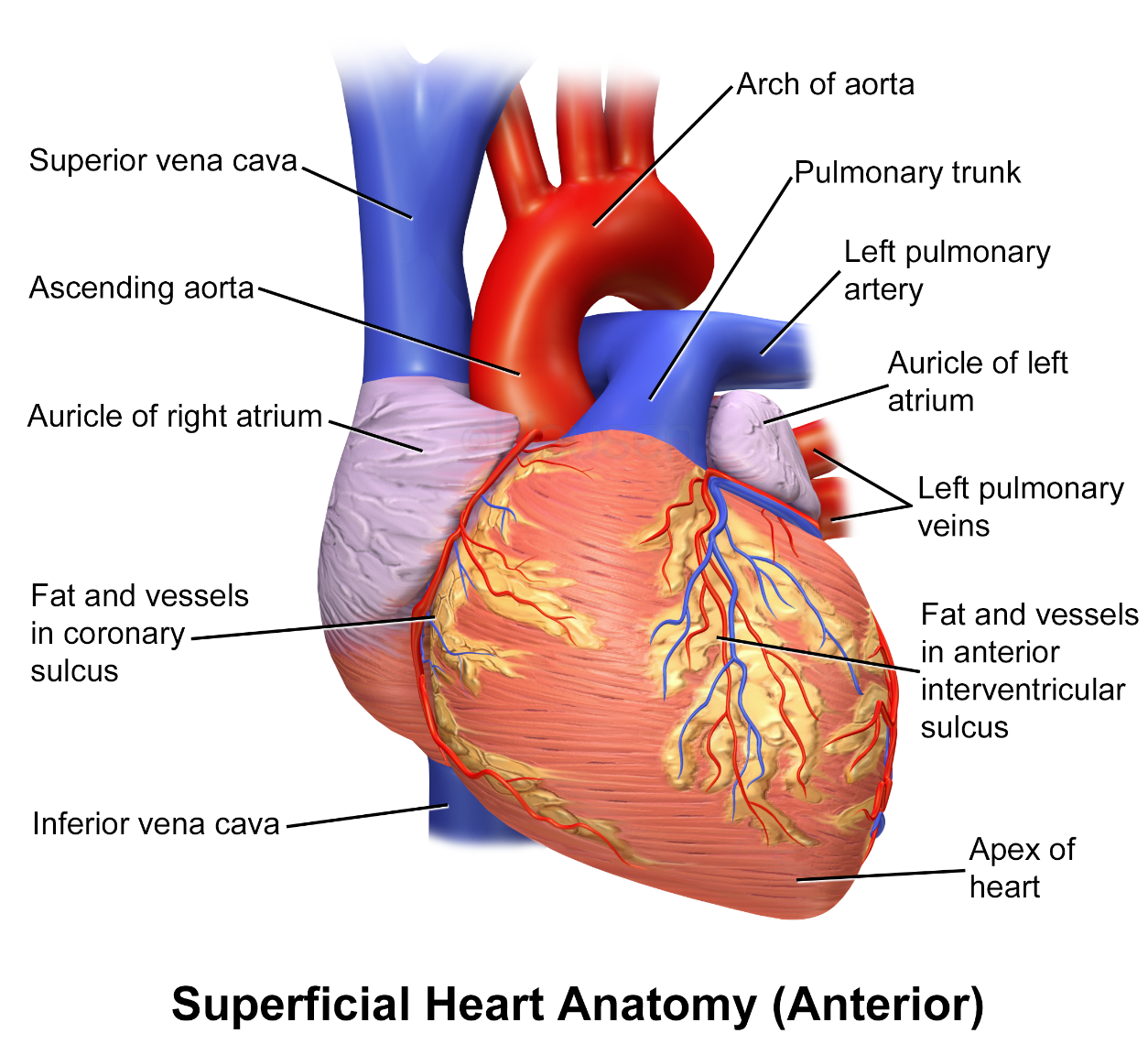
Describe the internal structure of the human heart.
Answer
561.6k+ views
Hint: Heart is the four chambered organs present in the chest region and it is surrounded by the membrane called pericardial membrane. The main function of the heart is to pump the blood and transport it to all parts of the body.
Complete answer:
The mass of the heart is two third at the center. The layer of the pericardial membrane covering the heart is divided into three types as epicardium, myocardium and endocardium. Epicardium is the outer layer; myocardium is the middle layer and the endocardium is the inner layer covering the heart.
Chambers of the heart:
The heart is of four chambers as right atrium, right ventricle, left atrium and left ventricle. The atria are thin walled chambers that transport blood to all the parts of the body where the veins are of thick-walled membrane and receive blood from all the parts of the body. This thickness of the heart varies due to the width of the myocardium present. Right chambers receive deoxygenated blood and left chambers receive oxygenated blood. These chambers have valves between them to maintain the flow of blood in one direction. The valves between the right auricle and ventricle are called tricuspid valves. And between the left auricle and ventricle is a bicuspid valve. Valves between the pulmonary trunk and right ventricle are semilunar valves and between the left ventricle and aorta is a semilunar valve.

Note: The function of the heart is to pump the oxygenated blood to the other parts of the body and receive deoxygenated blood from all the parts of the body and carry it to the lungs for oxygenation. It makes the blood flow and supplies the nutrients and hormones to all the cells.
Complete answer:
The mass of the heart is two third at the center. The layer of the pericardial membrane covering the heart is divided into three types as epicardium, myocardium and endocardium. Epicardium is the outer layer; myocardium is the middle layer and the endocardium is the inner layer covering the heart.
Chambers of the heart:
The heart is of four chambers as right atrium, right ventricle, left atrium and left ventricle. The atria are thin walled chambers that transport blood to all the parts of the body where the veins are of thick-walled membrane and receive blood from all the parts of the body. This thickness of the heart varies due to the width of the myocardium present. Right chambers receive deoxygenated blood and left chambers receive oxygenated blood. These chambers have valves between them to maintain the flow of blood in one direction. The valves between the right auricle and ventricle are called tricuspid valves. And between the left auricle and ventricle is a bicuspid valve. Valves between the pulmonary trunk and right ventricle are semilunar valves and between the left ventricle and aorta is a semilunar valve.

Note: The function of the heart is to pump the oxygenated blood to the other parts of the body and receive deoxygenated blood from all the parts of the body and carry it to the lungs for oxygenation. It makes the blood flow and supplies the nutrients and hormones to all the cells.
Recently Updated Pages
Why are manures considered better than fertilizers class 11 biology CBSE

Find the coordinates of the midpoint of the line segment class 11 maths CBSE

Distinguish between static friction limiting friction class 11 physics CBSE

The Chairman of the constituent Assembly was A Jawaharlal class 11 social science CBSE

The first National Commission on Labour NCL submitted class 11 social science CBSE

Number of all subshell of n + l 7 is A 4 B 5 C 6 D class 11 chemistry CBSE

Trending doubts
Differentiate between an exothermic and an endothermic class 11 chemistry CBSE

10 examples of friction in our daily life

One Metric ton is equal to kg A 10000 B 1000 C 100 class 11 physics CBSE

Difference Between Prokaryotic Cells and Eukaryotic Cells

1 Quintal is equal to a 110 kg b 10 kg c 100kg d 1000 class 11 physics CBSE

State the laws of reflection of light




